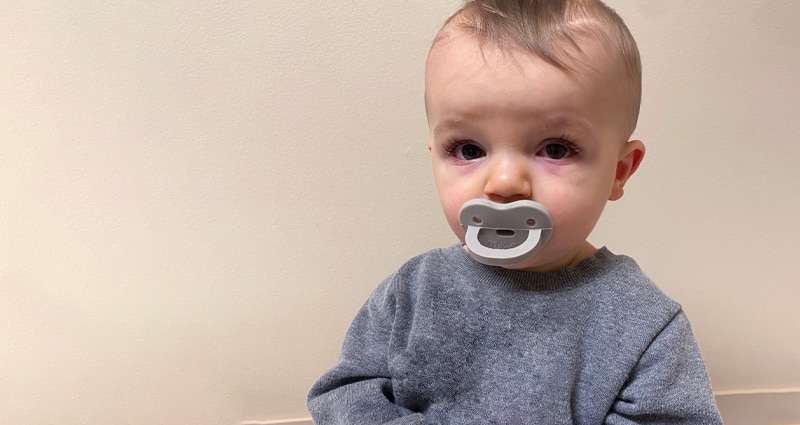Pink may be perfect, but when it comes to our kids’ eyes, it’s a color parents would rather not see. Pink eye, or conjunctivitis, is common, especially among children.
Hannah Chachere, MD, and Christie Duronslet, MD, pediatricians with Our Lady of Lourdes Children’s Health, share what parents need to know about this parenthood rite of passage: prevention, diagnosis and treatment.
Three Main Types
Pink eye can be bacterial, viral or allergic. Generally it appears as redness and swelling of the thin tissue surrounding the eye and inside of the eyelid.
Bacterial pink eye usually affects only one of the eyes. You may see a change in the white part of the eye to a light pink or red color, and there may be watery clear or yellow discharge from the eye. Often the eye will have lots of crusting as well, especially after a nap. Itching is very common, and you may notice your little one rubbing the eye often.
Some viruses can also cause pink eye, and in this case both eyes will typically be affected. The symptoms are the same as with bacterial, but you may also notice cough, nasal congestion and runny nose. Viral pink eye usually resolves in one to two days with warm compresses.
Pink eye due to allergies isn’t contagious and is treated with allergy eye drops. This type of pink eye doesn’t go away until the allergies do.
Diagnosis and Treatment
Once pink eye is diagnosed, activate cleaning mode. Clorox wipes are useful, and clothes and bedding should be washed on hot cycles. Infection is usually spread by contact so avoiding touching the eyes as well as cleaning any contaminated surfaces can be helpful. This is easier said than done when it comes to kids!
If symptoms are bacterial in nature, your doctor may treat with antibiotic eye drops or an antibiotic eye ointment. Treatment usually is recommended for seven days. There is typically improvement 24-48 hours after starting antibiotics.
Once the eye discharge has resolved it’s usually OK for the child to return to daycare or school, with some exceptions. If viral pink eye includes fever, kids can return to school or daycare once fever-free for 24 hours without the use of Tylenol or Motrin.
Pink eye can be extremely uncomfortable and cause blurry vision. Sometimes the infection can spread to other parts of the eye, which can damage the eye or make a little one very sick. If there is any swelling or redness of the outer eye lids, please see your doctor as soon as possible. This can be a sign of a more serious infection that requires oral antibiotics.
Preventing Spread
Good hand hygiene is key!
The best way for your little one to avoid getting pink eye from a friend or classmate is to wash their hands well and to wash them often! Encourage them to cough or sneeze into their elbow or shirt, rather than into their hands.
We’re all much better at washing our hands than we were before COVID-19, but a refresher with your kids is always a good idea. Use soap and warm water, get a good lather and scrub for at least 20 seconds before rinsing.
When someone has pink eye, don’t share personal items, including hand towels. Always keep hands away from eyes to avoid spreading bacteria and viruses.





